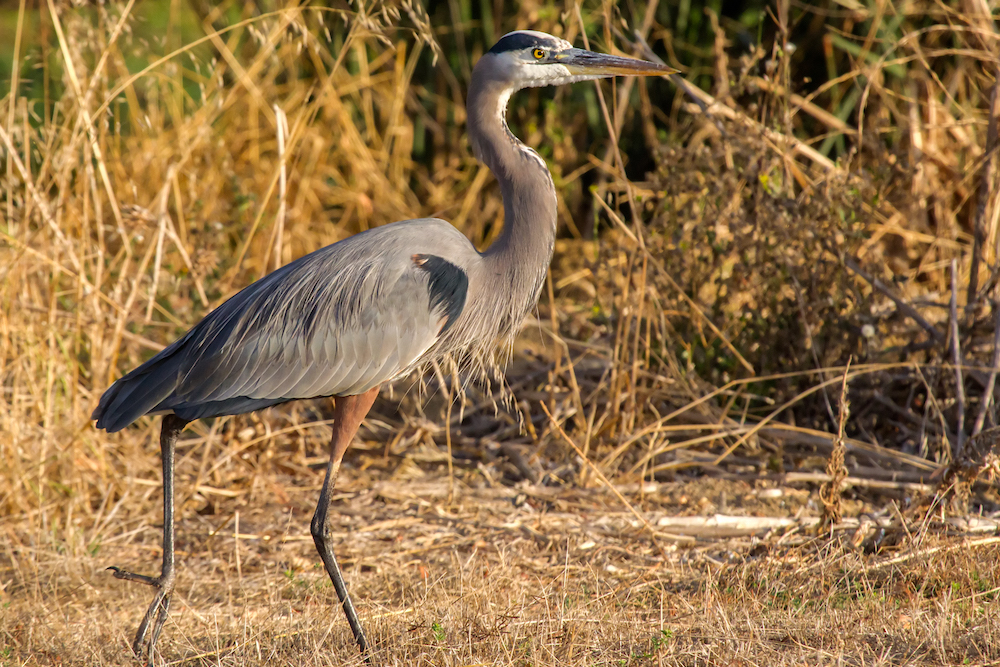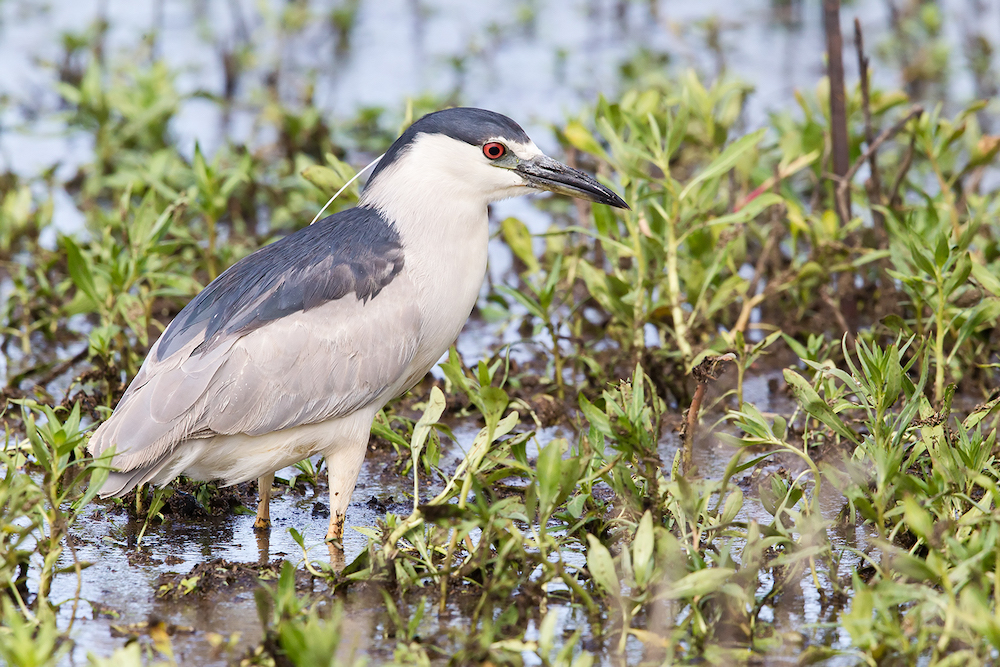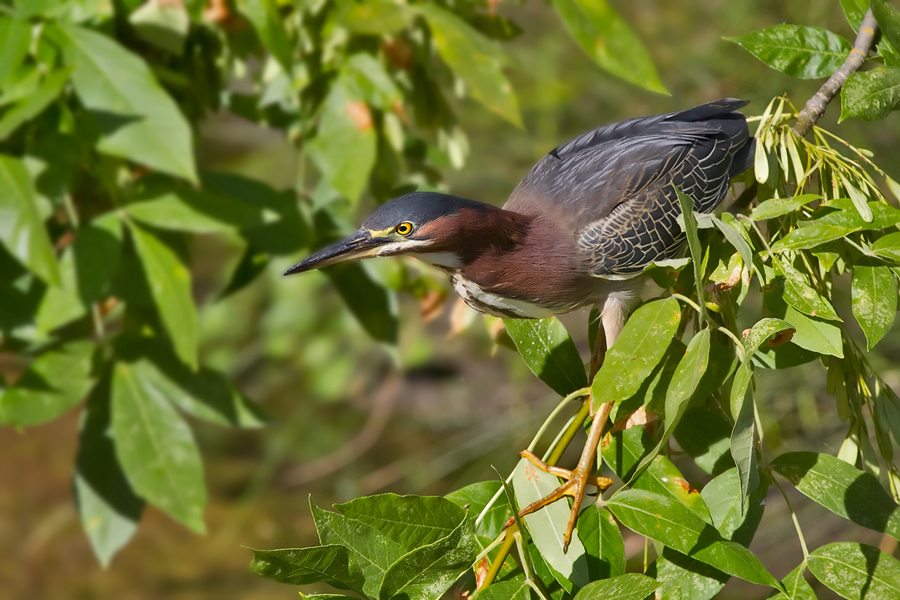Herons of Rice Country
By Luke Matthews
There are three heron species that call the Sacramento Valley their home. These are Great Blue Heron, Black-crowned Night-Heron and Green Heron. All three of these species can be found on rice fields; although Green Herons are more strongly associated with riparian habitats. With limited water in the Sacramento Valley this year we expect these herons to rely on rice fields even more, as there will be less flooded habitat on the landscape for them.

Of these species, the largest and most commonly seen in rice fields is the Great Blue Heron. Standing at heights of up to 4 1/2 feet, it is actually the largest heron in North America. Great Blues are found throughout the United States in every habitat type with water except for true desert and high mountains. Great Blues can be found on essentially any water source from oceans, creeks, rivers, swamps to flooded agricultural fields. Although they are typically solitary birds throughout the year, these herons are colonial breeders. This means that large number of Great Blue Herons will gather and build their nests together, high up in trees.

The second largest of our herons is the Black-crowned Night-Heron. These birds are much stockier than most other herons and they do not have the characteristic long necks that most other species in this family have. While Black-crowns have year round population in the Sacramento Valley, they are only summer migrants in many other areas of the united states. Black-crowns share similar habitat requirements with Great Blues and they are also colonial nesters; in fact, it is common to see mixed nesting colonies with other herons and egrets.

The smallest of the three is the Green Heron. These herons are often seen foraging in open flooded habitat such as marshes and occasionally rice fields; however, they are much more commonly associated with lakes, streams, and ponds that have shrubs and trees. Green Herons also differ from the other two heron species in that they are not colonial nesters. They typically nest in isolated pairs but can sometimes be found nesting in small groups.
Although Green Herons are typically more cryptic and shy, all three of these species can be seen in the Sacramento Valley year-round. With the dry conditions this year there is a good chance that, if you find yourself near a source of water, you could catch a glimpse of one of these birds.
Luke Matthews is the Wildlife Programs Manager for the California Rice Commission






